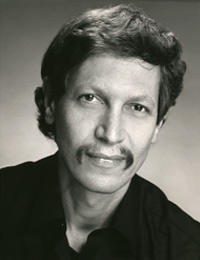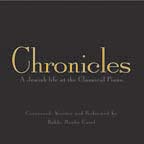Tisha B'Av - A Kabbalistic Approach
Hoje às 13:04
DON'T JUDGE A BOOK BY ITS COVER
A Kabbalistic Approach to the Tisha BaAv Experience
Rabbi Eliyahu Yaakov
For more from Rabbi Eliyahu Yaakov, go to: www.lightuntoournation.com
MAKING SENSE OF OUR SENSES
In Mishlei (Proverbs), God declares, “Happy [through personal growth] is the one who hears Me.” And in Devarim Rabbah, writings of the Sages, the Sages teach, “Happy [through growth] is the one who hears God.
The two questions that pop out at us are: 1) What does it mean to hear God? I mean, obviously it would be sweet if God just popped out of nowhere for chat, but is that really what these sources are trying to say? 2) And why does it cause this growth-oriented happiness? Or perhaps we should reinvent that second question: Isn’t it obvious that the experience of a date with the Divine would result in a happy growth-oriented experience?
So, the underlying theme here is this: In Judaism, we understand the choice of words to be very specific and particular. God’s not a joker and the Sages talk to the essence of the thing, so what does it mean to “hear” God as opposed to “see” God? Once we clarify this point, we can move on to study its consequential emotional, psychological, and spiritual effects.
A PARELLEL UNIVERSE
Kabbalah comes from the Hebrew word makbeel, which means parallel. One of the foundational secrets of Kabbalah is that everything in the physical world is merely a parallel of the spiritual reality. By studying the physical with the proper tools, knowledge, and guidance, we can get past our usual superficial understandings and delve deeper into ourselves, the world, and reality. Our senses are no exception. Our hearing and seeing are mere parallels; physical reflection of a deeper spiritual concept of what it means to truly hear and what it means to truly see.
PHYSICAL SIGHT
When you look at some thing, all you see is the outer layer of color. The first thing the eye has contact with is all you get with sight. Sight means, in essence, to see the cover, not the book. For example, when I look at my kitchen table, I see the external cover of the table; the surface of the table. I don’t see the atoms flying around. I don’t see the deeper inner essence of the table.
CONCEPTUAL SIGHT
The concept of sight means to see clearly, but only the surface.
We often judge people one way based on our first impression, but then we are exposed to something deeper about the person which causes us to have a complete paradigm shift. This is the concept of “hearing”. Hearing implies the ability to get beyond the surface and understand something for its inner depth. Speech comes from the inside. When someone speaks to us, he is exposing something of himself that is deeper than the outer layer; something beyond the surface. And it is only when we truly receive what he is saying on his terms that he senses that he has been truly understood and feels heard.
Recently, we hosted a couple from abroad for a Shabbat meal, and honestly I was wondering what the girl was doing the guy. She seemed like an attractive, with it, popular type, whereas he looked like a little bit of a goofball. Well, this couple and I hit it off pretty quick and I got to talking with him. Immediately, the way he spoke about relationships and other issues caught my attention and it became apparent to me exactly what she saw in him – depth – and in my opinion it’s to her credit that that was what she went for. Later on, I got a chance to talk with her as well and without me prompting her she said, “My friends don’t get what I’m doing with him, but people don’t get him – he can sit there quietly in a group and observe for five minutes and get everything that’s going on with everyone.”
How often do we judge a person or situation wrong because we’re only at the level of seeing, and not of hearing?
SEEING GOD VS HEARING GD
Just like we “see” and “hear” within the physical, so too we “see” and “hear” God.
In Kabbalah, it is said that God runs His world enclothed. What does this mean?
Again, Kabbalah is always understanding the world as a physical parallel to a grander conceptual reality. So, to understand the statement that God runs His world enclothed, we must understand the concept of clothes.
DRESSING UP
Clothes essentially accomplish two things. Firstly, clothes cover up what is truly there. It is a covering up of the naked truth because were the naked truth to be exposed it would result in a revelation of essence that is so great that it is not appropriate for the present situation. Additionally, with clothes we give off a certain impression. Clothes are our expression of identity and statement to the outside world. In the deeper sources the concept of clothing is always bound up with the concept kavod, meaning honor, glory, and dignity. The numerical value of the Hebrew word for clothed, levusha, is the same as the numerical value of kavod ha’eesha, meaning a woman’s honor. (The correlation between a woman’s honor and clothing is a lengthy and fundamental discussion for another time.)
DELUSIVE DATE
We use this twofold role of enclothing in life all the time.
Think about the last time you went out on a date. You puts on your best outfit, wore makeup, were extra careful about what you said and what you did not say – in essence you put on an act! And what was the purpose of this performance? So that he’ll like you and want to get to know you better - So for the purpose of getting the significant other to know who you are, you hide who you truly are on the date!?
This is the essence of enclothing. Enclothing means to conceal certain things for the purpose of preserving those things for the time when it would be more appropriate and receivable.
Now, as I write this I must admit I have difficulty relating to it. When I was dating I used to specifically put on a less than flattering shirt for the occasion and make sure to leave my car in the same mess it was always in [unless garbage was overflowing in the passenger seat – then I’d at least clean it out enough that she could fit in the car] because I didn’t want to give a wrong impression – I wanted the girl to know exactly what she was in for long term…Anyway, none of them married me.
The point here is that enclothing means to conceal certain things for the purpose of preserving those things for the time when it would be more appropriate and receivable. When we look at something, all we see is that outer appearance. And similarly when we see what’s going on in the world and what’s happening with the Jewish People, we only see the clothes – the outer appearance.
CONCEPTUAL HEARING
Again, hearing means to get beyond the surface and understand something for its inner depth. So, hearing God means to get beyond the outer appearance of the state of the world, and delve into what is happening from a deeper perspective; to understand the ultimate goal.
Now, as opposed to seeing, which is an instant; a first impression, hearing what a person has to say takes longer. To hear what a person has to say you have to sit through every syllable and use your brain to put them all together until the end when message becomes clear. It’s only at that point that you understand the intentions of the original syllables as it relates to the message as a whole. So, the concept of hearing is to truly receive the message in its essence. This means that it is only through the whole of the message that we can understand the true intent of each detail.
This leads us to a question: Once you have the whole message why study the details?
If it is the message you have been after and you have just grasped it, is there a point to the individual syllable on its own? Now that you have the deeper meaning and purpose, what could be the use of the seemingly trivial outer enclothment?
While the legitimacy of this question can lead to an interesting debate, when the message that is being communicated is coming from God, this question goes out the window. If the Infinite God has a story to tell, and He chooses a particular detail by which to get His message across, there is a reason why He is choosing that specific path to get His message across as opposed to all others. When it comes to the Infinite God, there is never anything random or trivial - everything is perfect and exact.
So, in the end we must conclude that by hearing the message we will come to see the details in their true light, and by seeing the specific details in their true light we can understand a new facet about the message we are hearing.
HIS-STORY
A book is a good comparison. When writing a book, the author will generally write the introduction last (sometimes he will not even have the title until the end!) Why? Because the introduction is supposed to be all-inclusive; it is supposed to express the totality of what is contained in the book. Therefore, if one were to first read the introduction, he would get a certain sense of what is in the book. But he will only comprehend how the small introduction is truly a product of the story being told in the book by reread the introduction after having read the whole book.
This article is a great example. I called it “Don’t Judge a Book by its Cover” – Most people probably assumed this was going to be an article about judging people favourably. Now, having read most of it, you can go back to title - the initial enclothing - and truly understand the author’s intentions and how the title encompasses the entire article.
The same principle applies to the Author of all authors, God. Each time period in the Jewish calendar is its own introduction to God’s constantly unravelling story of humanity’s journey towards God-consciousness. Each phase has its own focus; its own particular path to be traveled in order to reach that timeless universal destination of God-consciousness and awareness.
HOLY HIDE AND SEEK
The Tisha Ba’Av experience is an episode in which the ability to see God on the surface has diminished. God has “hidden His face” from us; enclothed Himself in a difficult cover.
The concept of face hiding is that it is by one’s face that one is identifiable. You’ll notice that when the police sketch someone on their Wanted List, it is the face they are sketching, not any other body part. This is because if you were to see someone from the neck down, unless that individual has an extraordinarily unique physical trait or you are especially close with him, you will not be able to decipher who that person is, whereas if you were to see him from the neck up, the identity would be clear and obvious.
The face is the part of us that captures our individuality. In a sense it is what gives us our personal identity. It is the face by which each of us is recognized.
Hiding implies that the initial appearance being given is that the object or individual that is hidden is not there at all. One is only inclined to search for that which is hidden once he has the knowledge that it is there just beyond the horizon.
When God is hidden from sight, in order to hear the full story, we must first shut our eyes to the initial appearance of godlessness and destruction. In a sense, we must assume a put-up job and conduct a deeper search into the true essence of what is really going on – the unfolding of the road towards knowing God. Once we have truly heard this ultimate purpose, we can return to that initial enclothment of destruction and ask, “If the end-goal is achieving God-awareness, what can I learn from the outer appearance God is portraying? What route is God expressing to me to take at this moment in my journey towards God-consciousness?”
STUDENT-TEACHER RELATIONSHIP
Chana, my wife, has a teacher who she very much admires. She likes to consult with her from time to time and talk things out with her in general. However, she is not the only one who has this feeling. This teacher is actually very popular and sought after, which makes her very busy and difficult to get to. And to try and grab a conversation with this teacher in her zone (i.e. after a class) can lead you into a brawl. So, instead of trying to meet the teacher in her set zone where there are many obstacles, my wife tries to catch her in the street, offer her rides, or take rides with her to wherever she is going.
THE TISHA BAAV EXPERIENCE
Similarly is the picture of the exiles and destructions of Jewish sites painted by the Tisha Ba’av experience. While, of course these are troubling times that we certainly don’t yearn for, there is an opportunity present in this time of homelessness for God. It is now that God can be found in the streets! Now it is easier than ever to grab Him for a conversation and speak to him as much as your heart desires!
So the process is three-fold. By first shutting our eyes to the initial perception of troubles, we free ourselves to meditate on the knowledge that the ultimate story being told is one of advancing God awareness in a world where all the nations point to our situation and ask, “Where is this God of yours?” With this in mind we can finally look back at the enclothment of Tisha Ba’Av’s exile and destruction to find the practical application of our initial perception – that now more than ever we can grab God for private conversation.
On Tisha Ba’Av, as in most cases in Judaism, there is a duality going on: We are to experience the sadness of Tisha Ba’Av, yet also realize the unique opportunity it brings us. As the saying goes, out the darkest darkness comes the brightest light. We are to experience the darkness with the whole of the Jewish people, yet as individuals bring out light from the experience.
EYE SURGERY
On a deeper level, this is a time for fixing the eyes; for fixing sight.
The verse in Tehillim (Psalms) states, “This was from God; It is a wonder in our eyes.”
Having learned the concepts of seeing and hearing, we can understand this verse on a more profound level – that these times are a wonder in our eyes means that they are difficult at the level of perception and that they call for a temporary closing of the conceptual eyes and opening of the conceptual ears.
Additionally, a verse in Eichah (Lamentations), read Tisha BaAv night, states, “My eye, my eye drips down water”. The Arizal, the foremost of the Kabbalists of the last 500 years, expounds that every month corresponds to a different part of the face. These months of Tamuz and Av correspond to the right eye and left eye respectively, and that these verses refer to the sadness and the pain of these times specifically.
But in redemption, Yeshaya (Isaiah) proclaims, “Lift up your eyes [and look] around”.
When a person is crying, everything is foggy. You can’t see anything but what’s right there in front of your face; you can’t see the peripheral. But in the times of redemption, these times of sadness will be turned into times of joy. In times of redemption, there will no longer be this discrepancy between what is seen and what is heard. In the times of redemption, not only will we know God due to our deeper understanding, but we will experience God even on the surface.
Rabbi Eliyahu Yaakov is a lecturer on Jewish Philosophy and Kabbalah who is noted for his plethora of parallels and explanatory precision, and the author of the new book "Shabbos Insights of the Maharal".










mirava en el cielo y en la estrería
vido luz santa en la judería
que havía de nazer Abraham Avinu.
Abraham Avinu, Padre kerido,
Padre bendicho, luz de Yisrael. (2x)